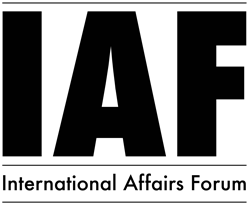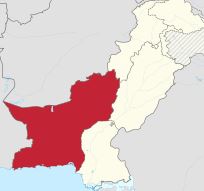| Tue. May 06, 2025 |
 |
|
||
|
||||
| ||||

Introduction
The Balochistan insurgency remains one of Pakistan’s most complex internal security challenges. Rooted in historical grievances, economic marginalization, and political discontent, the conflict has persisted for decades. Recent escalations, characterized by increasingly sophisticated attacks and the involvement of educated Baloch youth, signal a critical turning point. The Pakistani state faces a formidable task in addressing the crisis, balancing security measures with developmental and political reforms. This article explores the root causes of the insurgency, its impact on national stability, and potential pathways toward resolution.
Historical Context and Grievances
Balochistan, Pakistan’s largest yet least developed province, has long experienced a sense of alienation from the central government. The roots of the insurgency can be traced back to 1948 when Baloch nationalists opposed Balochistan’s integration into Pakistan. Over the decades, cycles of armed resistance have recurred, with significant uprisings occurring in 1958, 1973, and the early 2000s.
One significant grievance among Baloch nationalists is the perceived exploitation of the province’s abundant natural resources. Despite being rich in gas, minerals, and other valuable commodities, Balochistan remains economically disadvantaged. The local population argues that the revenue generated from these resources primarily benefits the federal government and other provinces instead of the Baloch people. Many Baloch activists assert that although they produce a considerable share of Pakistan’s natural gas, Balochistan experiences gas shortages and lacks proper infrastructure. This economic disparity has intensified resentment and reinforced the separatist narrative.
Another crucial factor is the lack of political representation. The central government’s heavy-handed approach, including the suppression of nationalist leaders and the curtailment of local governance, has exacerbated the sense of marginalization. Many Baloch leaders contend that the region’s governance is dictated by Islamabad rather than by locally elected representatives. The killing of prominent Baloch leaders, such as Nawab Akbar Bugti, in 2006 further intensified the insurgency, leading to a surge in militant activities. His death became a rallying cry for separatist groups, deepening anti-state sentiments among the Baloch population.
The Evolution of the Insurgency
The latest phase of the Baloch insurgency has undergone a transformation in its dynamics. Once dominated by tribal elements, the movement is now experiencing the involvement of educated middle-class youth. This shift signifies a fundamental change in the insurgency’s ideological base. Many young Balochs, frustrated by a lack of opportunities and political representation, view militancy as their only option for asserting their rights.
Groups like the Baloch Liberation Army (BLA) and the Baloch Liberation Front (BLF) have embraced more sophisticated tactics, including targeted strikes on security forces, Chinese investments, and essential infrastructure. The growing use of suicide attacks and urban guerrilla strategies showcases the insurgents’ evolving capabilities. Unlike earlier waves of insurgency, which were mainly confined to remote tribal areas, recent assaults have focused on strategic economic assets, particularly those associated with the China-Pakistan Economic Corridor (CPEC).
A significant aspect of this evolution is the strategic shift towards urban warfare. Recent attacks in major cities, including Quetta and Gwadar, indicate an expansion beyond traditional tribal strongholds. This shift presents a serious challenge for security forces, increasing the unpredictability of militant operations. Militants have also targeted security installations, showcasing their ability to breach high-security zones. The growing use of propaganda via social media has further extended the insurgency’s reach, enabling groups to recruit from urban centers and university campuses.
The increasingly international dimension of the insurgency is another worrying trend. Pakistani authorities have often accused India of providing financial and logistical support to Baloch separatists. While New Delhi officially denies these allegations, reports of external influence cannot be entirely disregarded. Moreover, the instability in Afghanistan has also contributed, raising concerns that insurgents are exploiting cross-border sanctuaries. The porous border between Pakistan and Afghanistan has historically facilitated arms smuggling and the movement of militants, making it challenging for Pakistan to mitigate external influences on the insurgency.
The Security and Economic Impact
The insurgency has had a profound impact on Pakistan’s security landscape. The province has experienced frequent bombings, targeted killings, and ambushes on military convoys. These attacks have not only strained the country’s security forces but also resulted in significant casualties among civilians and armed personnel. The psychological impact on security forces operating in Balochistan is immense, with many deployed in hostile environments for extended periods.
From an economic standpoint, the unrest in Balochistan poses a significant threat to Pakistan’s development initiatives, especially the China-Pakistan Economic Corridor (CPEC). Numerous high-profile attacks on Chinese workers and infrastructure projects have heightened concerns in Beijing, jeopardizing foreign investment. Chinese companies have voiced worries about the security climate, with some projects facing delays or necessitating increased security measures. The security threats linked to CPEC projects in Balochistan could dissuade future economic partnerships, ultimately stifling Pakistan’s long-term growth potential.
Furthermore, the insurgency has exacerbated internal displacement and humanitarian crises. The conflict has forced thousands of Baloch families to flee, creating a cycle of socio-economic hardship that further alienates the local population. Reports of enforced disappearances and extrajudicial killings have heightened grievances, fostering an atmosphere of fear and resentment. Families of missing persons regularly stage protests, seeking accountability from the state, yet their concerns often remain unaddressed. The distrust between the state and the Baloch people continues to grow as these human rights issues remain unresolved.
State Response and Policy Challenges
The Pakistani state has primarily relied on military operations to suppress the insurgency. While these measures have yielded temporary stability in certain areas, they have not addressed the underlying grievances that fuel the conflict. The heavy-handed approach, including enforced disappearances and allegations of human rights abuses, has often backfired, leading to further radicalization.
The government has also attempted economic integration initiatives, such as development projects and infrastructure improvements under CPEC. However, these efforts have been met with skepticism, as many locals believe they are designed to benefit external stakeholders rather than the Baloch population. The lack of inclusive development and genuine political dialogue has rendered these initiatives ineffective in curbing militancy. Many Balochs remain unconvinced by government promises, citing past instances where economic projects failed to bring tangible benefits to local communities.
One of the significant policy challenges is the absence of a comprehensive reconciliation framework. Unlike conflict resolution efforts seen in other insurgencies worldwide, Pakistan has yet to develop a robust mechanism for political negotiations with Baloch separatists. The continued exclusion of nationalist voices from mainstream politics exacerbates tensions, making a peaceful resolution increasingly tricky.
The Path Forward: Toward Sustainable Peace
A sustainable resolution to the Balochistan insurgency requires a multi-faceted approach that goes beyond military operations. The following key strategies could pave the way for lasting peace:
1. Political Reconciliation and Dialogue
Engaging Baloch nationalist leaders and insurgent groups in meaningful dialogue is crucial. A comprehensive political reconciliation framework should be prioritized, similar to peace negotiations in other conflict zones. Confidence-building measures, such as the release of political prisoners and an end to enforced disappearances, could serve as initial steps toward fostering trust.
2. Economic Inclusivity and Local Empowerment
Economic development in Balochistan must be designed to benefit the local population directly. Policies should focus on job creation, skill development, and fair resource distribution. Ensuring local representation in CPEC projects and granting Balochistan greater control over its resources could help alleviate economic grievances.
3. Security Reform and Human Rights Protection
A shift from a purely militarized approach to a more community-centered security strategy is essential. Addressing human rights concerns, ensuring accountability for security forces, and implementing confidence-building measures can reduce hostility and radicalization.
Conclusion
The escalation of the Balochistan insurgency presents a grave challenge for Pakistan, requiring a nuanced and multi-pronged response. While military measures may suppress immediate threats, a long-term resolution hinges on addressing the socio-political and economic grievances of the Baloch people. A genuine commitment to political dialogue, inclusive development, and human rights protection can pave the way for lasting peace. Without such measures, the cycle of conflict is likely to persist, posing continued risks to Pakistan’s national security and economic stability.
The government must prioritize meaningful dialogue with Baloch leaders, ensuring their concerns are addressed through democratic means rather than military suppression. Additionally, economic initiatives should be tailored to directly benefit local communities, ensuring that development projects do not merely serve external stakeholders. Security measures should be complemented with human rights protections, ensuring that allegations of extrajudicial killings and enforced disappearances are addressed transparently. Without trust-building measures, any attempt at peace will remain fragile. Finally, Pakistan must engage in proactive diplomacy to prevent external actors from exploiting the insurgency for their strategic interests. A sustainable and peaceful resolution can be achieved by addressing both domestic and international dimensions of the conflict. Pakistan can hope to restore stability and foster prosperity in Balochistan through a balanced approach.
Tabish Munir is a research scholar at Quaid-e-Azam University, Islamabad.
| Comments in Chronological order (0 total comments) | |
| Report Abuse |
| Contact Us | About Us | Donate | Terms & Conditions |
|
All Rights Reserved. Copyright 2002 - 2025